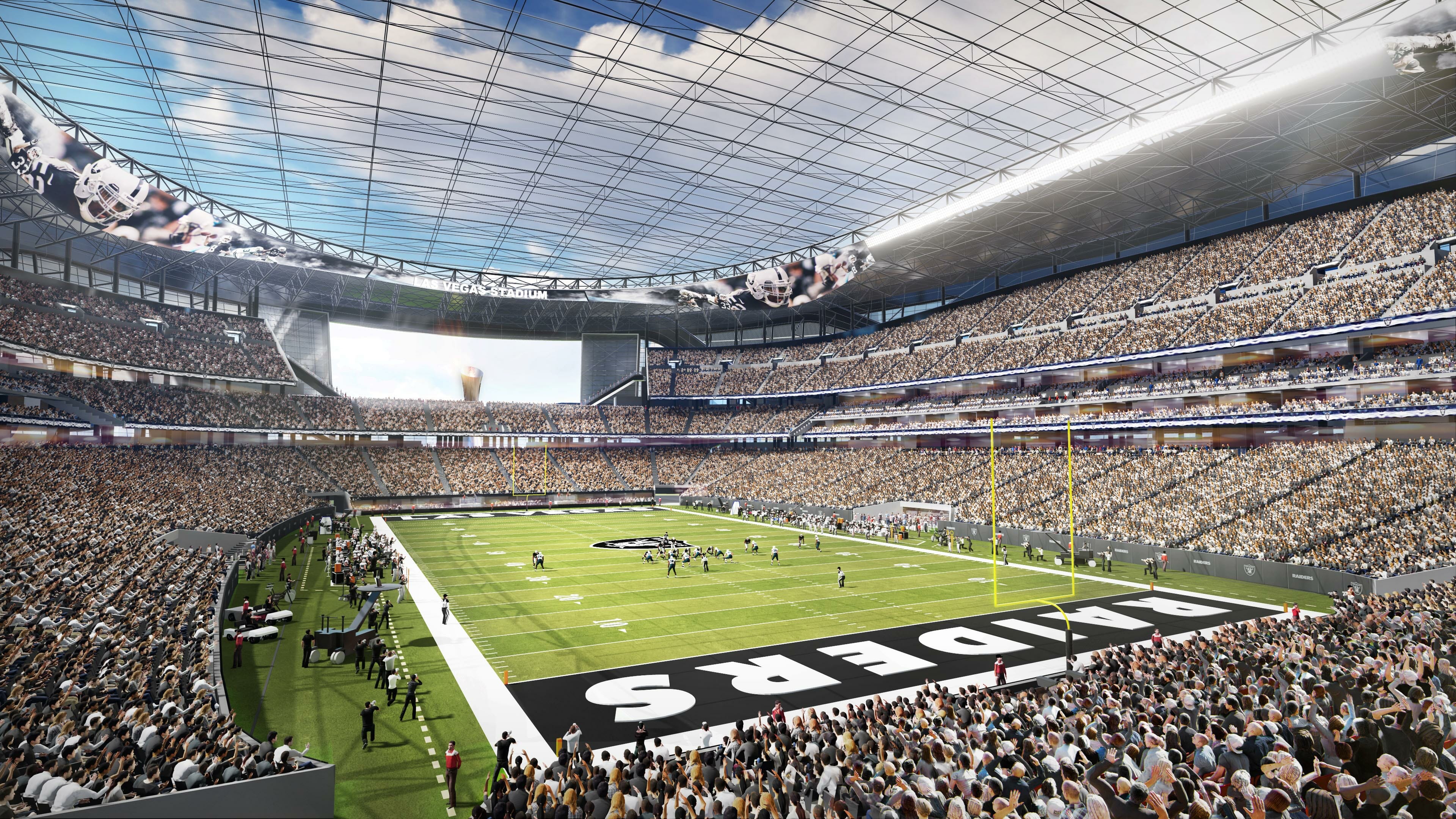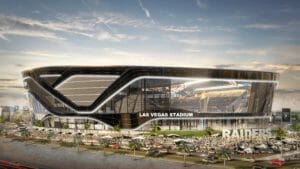Fan experience top priority in quest to build a buzz-worthy stadium

You’re sitting near the 50-yard line, yearning for a cold beer and decadent plate of nachos.
But the football game is too good to abandon, so you whip out your smartphone, open an application and place an order. The frothy beverage and gameday snack will be headed your way soon — without the hassle of lines or possibility of missing a key play.
Sound too good to be true? Maybe not.
As the Oakland Raiders prepare to move to Las Vegas, stadium experts say the team’s new home will need to showcase the industry’s best design and fan amenities, technology services included. After all, the planned 65,000-seat facility will be within eyeshot of the luxury resorts and casinos resembling an Egyptian pyramid, medieval castle and Parisian street that dot the Las Vegas Strip.

Earlier this week, the Raiders closed on a 62-acre land purchase near Russell Road and Interstate 15, which emerged as the desired site last year. The team paid $77.5 million for the acreage, as first reported by The Review-Journal.
“With any stadium, I think (the) more you can integrate it into the urban core, the better,” said Jeff Sittner, senior associate at HOK, a global design, architecture and engineering firm. “In Vegas, that’s going to be hard because you kind of have to compete with all that is the craziness of Vegas.”
Raiders officials and local leaders have vowed the stadium — financed by private investment and a $750 million public contribution — will be a venue worthy of the so-called entertainment capital of the world. But it has stiff competition even within the National Football League, which has seen multiple stadiums open during the last decade.
AT&T Stadium, which debuted in 2009 and is home to the Dallas Cowboys, has garnered a reputation as a must-see facility — so much so that it offers tours. And it’s not even the newest stadium. That distinction goes to U.S. Bank Stadium in Minneapolis, where the Vikings play. But it will be short lived as the latest one. The Atlanta Falcons’ new facility, Mercedes-Benz Stadium, is expected to open this summer. The stadium’s website bills it as the “finest sports and entertainment facility in the world.”
So what will it take to make the estimated $1.9 billion Las Vegas stadium a cut above the rest? The answer most likely lies in three words: the fan experience.
“Fans are wanting more and more service when they come to the stadium,” said Sittner, who was involved in the design of the Mercedes-Benz Stadium. “The key is to enhance that experience and look for ways to keep them in their seats and make that a special day for them.”
That’s why stadiums have turned to technology. Many sporting facilities are creating apps that allow attendees to track game statistics in real time or order food, beverages and merchandise from their seats, Sittner said.
With convenience and comfort in mind, stadium officials naturally, then, pay special attention to seating. Mike Newcomb, who oversees UNLV’s athletic facilities, said his staff examined nearly two dozen seats when renovating the Thomas & Mack Center. Yes, that included sitting in them to test for comfort.
Sittner said the seating options at the recently renovated Hard Rock Stadium in Miami vary from reclining seats with foot rests, side tables and coolers to more standard stadium seats.
“It’s providing something for everyone,” he said.
The same theory applies to stadiums’ food and beverage selection. T-Mobile Arena, which opened on the Strip last year, offers everything from hot dogs and draft beers to signature cocktails, and a Shake Shack and Gastro Pub, which serves prime rib sandwiches and duck fat fries.
Newcomb, who’s a Las Vegas Stadium Authority board member, expects the football stadium’s offerings to be just as plentiful, if not a little fancier, with “hot dog to steak-and-lobster kind of options.”
“T-Mobile did a great job of taking that kind of stance over there,” he said. “Now you can just kick that up a notch with a bigger venue.”

Don’t be surprised to find abundant high-definition video boards, ample phone-charging stations, conveniently located restrooms and maybe even a nightclub weaved into the stadium design, said Newcomb, who thinks the best ideas will be plucked from existing sports facilities. (For instance, T-Mobile Arena boasts a nightclub on its top floor, giving it a uniquely Las Vegas feel.)
Officials from the Raiders and MANICA Architecture, which produced early renderings of the Las Vegas stadium, did not respond to interview requests.
Video renderings released by the firm earlier this year, however, show a see-through dome as well as giant windows behind the north end zone that can open, revealing a panoramic view of the Las Vegas Strip.
Sittner likens stadium design to the theme-park mentality: Just as amusement parks battle to build the next-greatest thrill ride, teams construct stadiums with better design features and amenities than previous projects.
“Each year, you need to generate something new and exciting for the fans to keep their interest,” he said.
But stadiums don’t just need to satisfy fans. They also need to please the athletes and provide enough flexibility to host other events, such as concerts, college sports tournaments and motorsport shows.
Professional athletes increasingly desire locker rooms with plenty of space and privacy, weight rooms, stretching areas and spa amenities, Sittner said. That’s in addition to office space for coaches and staff.
Because the Raiders will be sharing the stadium with the UNLV football team, Newcomb said the facility will house separate locker rooms for both Las Vegas-based teams as well as space for visiting teams. Also out of view for stadium attendees: plenty of rooms backstage to accommodate performers and provide storage.
Of course, all these design features come with a cost. How many amenities — and surprises — the team can pack into its $1.9 billion budget remains to be seen. But local officials involved in the project say it’s safe to conclude they’re building to impress and, in the process, lure more tourists to Las Vegas.
“The possibilities are endless,” Newcomb said.
Feature photo: Rendering courtesy of MANICA Architecture.
